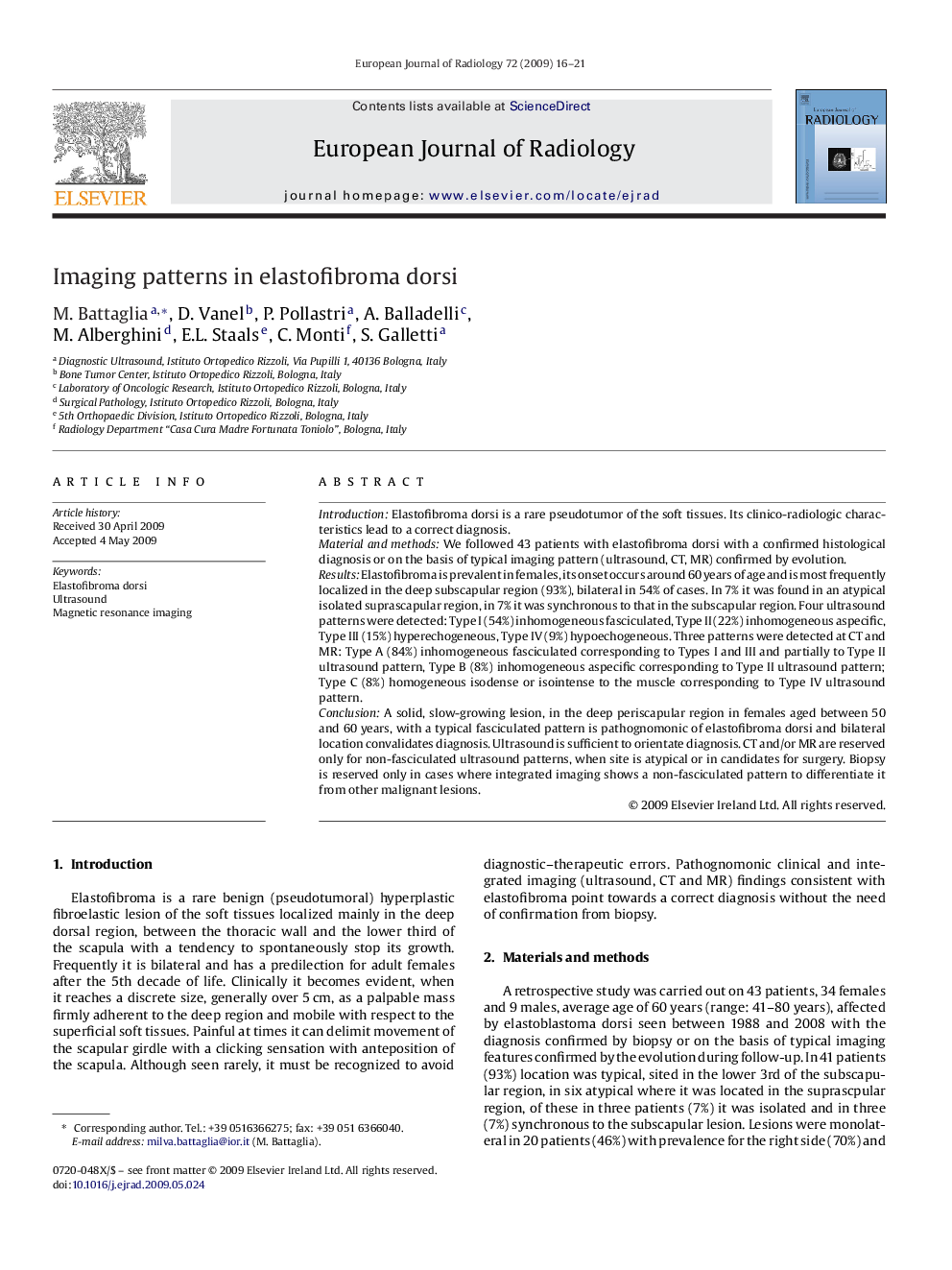| Article ID | Journal | Published Year | Pages | File Type |
|---|---|---|---|---|
| 4227030 | European Journal of Radiology | 2009 | 6 Pages |
IntroductionElastofibroma dorsi is a rare pseudotumor of the soft tissues. Its clinico-radiologic characteristics lead to a correct diagnosis.Material and methodsWe followed 43 patients with elastofibroma dorsi with a confirmed histological diagnosis or on the basis of typical imaging pattern (ultrasound, CT, MR) confirmed by evolution.ResultsElastofibroma is prevalent in females, its onset occurs around 60 years of age and is most frequently localized in the deep subscapular region (93%), bilateral in 54% of cases. In 7% it was found in an atypical isolated suprascapular region, in 7% it was synchronous to that in the subscapular region. Four ultrasound patterns were detected: Type I (54%) inhomogeneous fasciculated, Type II (22%) inhomogeneous aspecific, Type III (15%) hyperechogeneous, Type IV (9%) hypoechogeneous. Three patterns were detected at CT and MR: Type A (84%) inhomogeneous fasciculated corresponding to Types I and III and partially to Type II ultrasound pattern, Type B (8%) inhomogeneous aspecific corresponding to Type II ultrasound pattern; Type C (8%) homogeneous isodense or isointense to the muscle corresponding to Type IV ultrasound pattern.ConclusionA solid, slow-growing lesion, in the deep periscapular region in females aged between 50 and 60 years, with a typical fasciculated pattern is pathognomonic of elastofibroma dorsi and bilateral location convalidates diagnosis. Ultrasound is sufficient to orientate diagnosis. CT and/or MR are reserved only for non-fasciculated ultrasound patterns, when site is atypical or in candidates for surgery. Biopsy is reserved only in cases where integrated imaging shows a non-fasciculated pattern to differentiate it from other malignant lesions.
